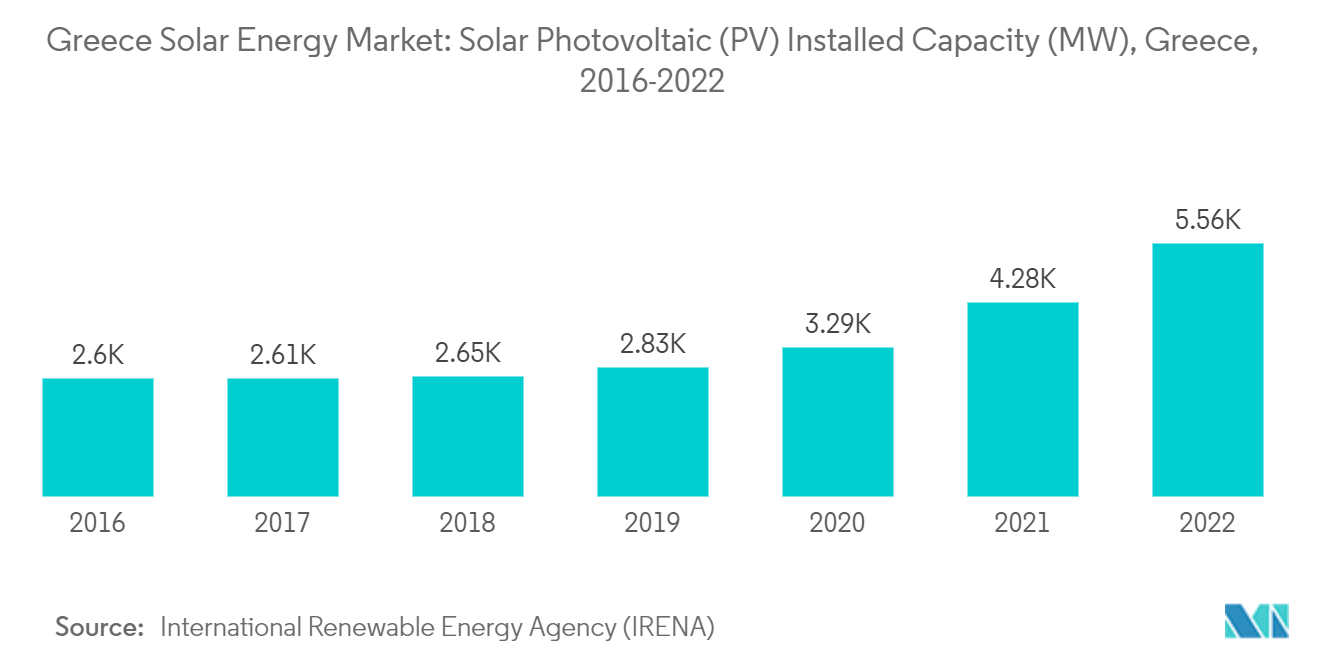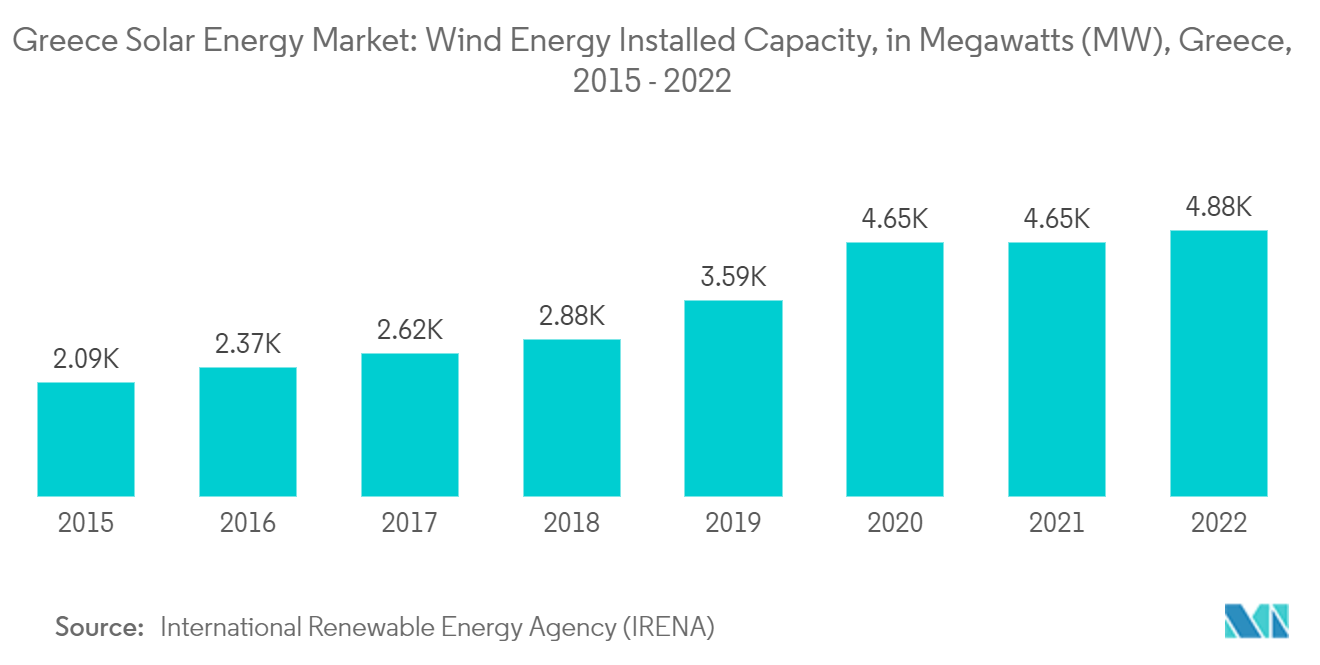Market Trends of Greece Solar Energy Industry
Ground-mounted Segment to Witness Significant Growth
- A ground-mounted solar power plant's process involves collecting solar radiation, converting it into an electric charge, and then sending that charge across conductive cables to an inverter. With these panels, the ground-mounted solar system can generate more electricity due to its increased exposure to both direct and reflected sunlight. It provides the highest efficiency, typically up to 22%. Even when they're provided with the same amount of sunlight, a ground-mounted solar system produces more electricity than a rooftop system. Hence, ground-mounted solar panels provide one of the best ways to produce solar energy on a big scale.
- Greece is a southern European country with abundant solar radiation compared to northern European countries. As a result, the investment yield is higher. The land cost in Greece is lower than its Northern European counterparts for ground-mounted projects. As a result, the ground-mounted solar development segment is expected to attract significant investments in the coming years.
- In August 2023, RWE Renewables and PPC Renewables decided to develop further investments in three photovoltaic projects, comprising ground-mounted and rooftop solar projects, with a total capacity of approximately 280 MWp, referred to as Amynteo Cluster II. The development will begin in the coming months, and all three Amynteo Cluster II projects are scheduled to be fully operational by the end of 2024. All these developments are likely to accelerate the growth of the Ground-mounted Segment in the country.
- In March 2023, the Greek government organization for the Environment and Energy announced a new EUR 200 million ( USD 215.3 million) subsidy scheme for solar power projects, including ground-mounted solar projects and small-scale energy storage devices for residential and commercial use. All these investments are likely to accelerate the growth of the Ground-mounted Segment in the country.
- Moreover, Greece's new national energy plan specifies the development of 7.7 GW of solar PV capacity by 2030. The plan specifies that the installed PV capacity in the country should rise from 3.9 GW in 2022 to 10.9 GW between 2025 to 2027 and 13.4 GW in 2030. The increased demand is expected to create opportunities for new investors and attract new investments for ground-mounted solar projects.
- According to International Renewable Energy Agency (IRENA), solar PV installed capacity has reached 5.56 GW in 2022, which is higher than 109.5% of total solar PV installed capacity in 2018. The reason behind this is that Ground-mounted solar energy projects have witnessed a significant rise in the past few years.
- Due to the above reasons, it seems likely that the ground-mounted segment will grow a lot during the forecast period.

Increasing Demand for Wind Energy Restraining the Market Growth
- Wind and other renewable energy sources dominate Greece's renewable energy mix. However, this scenario has begun changing fast with the growth of wind energy.
- As of 2023, Greece plans to have 7 GW of wind power by 2030, according to its National Energy and Climate Plan. More than 4.9 GW of onshore wind energy were in place in Greece as of 2022, providing a sizable amount of the country's electricity needs. Greece has far more wind energy potential, particularly offshore wind. Offshore wind resources are promising for assisting islands in achieving energy independence. Hence, all these strategies are likely to restrain the growth of the solar energy market.
- In addition to the Hellenic Wind Energy Association (HWEA), 68 new wind turbines worth EUR 230 million were installed in 2022. Moreover, Kamaridis GlobalWire has been approved for five additional wind projects totaling 120.3 MW and valued at USD 130 million. These projects are expected to take place in Xanthi and Rodopi, Greece. All these projects are likely to restrain the growth of the solar energy market during the forecast period.
- In October 2023, Greece's Ministry of Environment and Energy initiated an Offshore Wind Development Plan with a target of 4.9 gigawatts by 2032. With a minimum capacity estimated at 12.4 GW, the draft plan consists of 25 areas totaling 2,712 square kilometers. All these developments are likely to restrain the growth of the solar energy market in the country during the forecast period.
- According to International Renewable Energy Agency (IRENA), wind energy installed capacity has reached 4.88 GW in 2022, which is higher than 69.6% of total wind energy installed capacity in 2018. The reason behind this is that offshore and onshore wind energy projects have witnessed a significant rise in the past few years.
- The wind energy sector in the country has been growing faster than the solar energy sector during the last decade. It is expected to keep leading in terms of growth over the next few years, thanks to good policies from the government. This is expected to hinder the growth of Greece's solar energy market.


